by Yelizaveta Renfro, Artist-in-Residence, 2021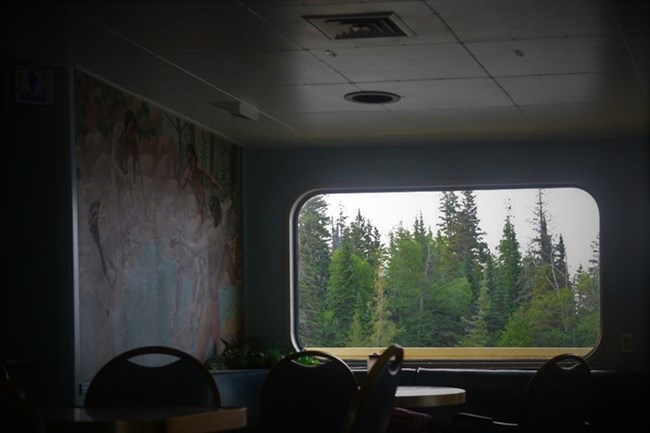
YELIZAVETA RENFRO EmbarkingAs you travel down the Keweenaw Waterway towards Lake Superior aboard the Ranger III, you watch houses and trees through the window, a moving postcard. A runner loping along a trail following the waterway appears in view, running inside your postcard, and as you watch him, you think how miraculous it is that you’re both alive on this one day, that he and you have both ended up here, that he has become part of your life, even if he doesn’t know of your existence. But what, really, do you know of his? That he is young and strong, that he runs on this beautiful sunny morning along a waterway in the Upper Peninsula, that he seems to love being alive—or so his stride tells you. You tell your boy, who is sitting beside you, about the runner, but he is engrossed in maps. Finally, out on the lake, your postcard flatlines, registering just water and horizon line. You are going to a place you have never been where you will see sights you’ve never seen. A ranger’s voice erupts from the PA system, telling you about the place you’re going, “a mystical land full of moose and wolves.” 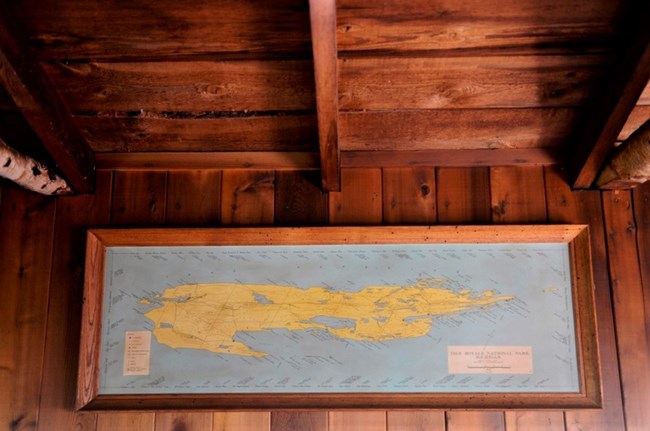
YELIZAVETA RENFRO Mental MapsIf Lake Superior is a wolf’s head, then Isle Royale is the eye, peering west over northernmost Minnesota. And if Isle Royale is the eye, then Dassler Point is near the lateral canthus. But up close, Isle Royale doesn’t look like an eye. A 1914 travel brochure describes the main island “fringed with hundreds of small and scenic islands, like diamonds encircling a brilliant emerald or sapphire, each a natural gem in the silvered sea, rock-anchored and foliage-wreathed.” Your sketches of your location look like the head of an open-ended spanner wrench, your cabin at Dassler on one point, Scoville on the other point, with your rocky beach in the opening between the jaws. For a century, people have lived on this point among rocks and trees and sky—first, the Dasslers of Leavenworth, Kansas, summer after summer, camping and then building structures. For the past three decades, the cabin has housed artists-in-residence. On the first day, your boy is turned around and can’t find the outhouse or the boathouse, but with each day, you explore and add detail to your mental maps. Soon, he is bounding up and down the crisscrossing trails. Soon, you know this place by heart. 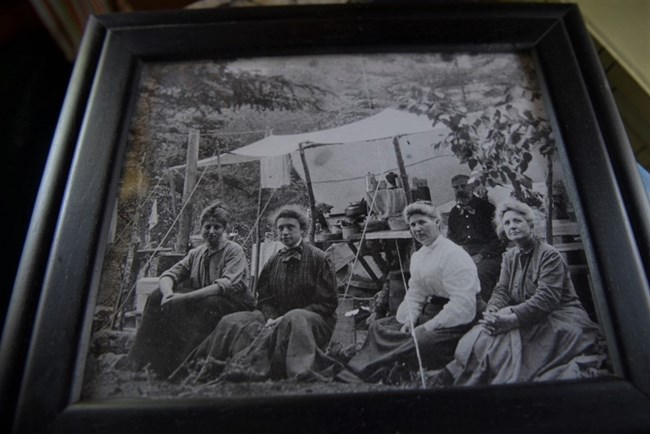
YELIZAVETA RENFRO NeighborsYou never expected to be thinking so much about people, but history here teems with fishermen, miners, well-to-do Midwesterners fleeing summer hay fever, and earlier, indigenous peoples who harvested copper, fish, caribou, beaver, maple sugar. A book in the cabin, Isle Royale: A Photographic History, offers 150 photographs from the mid-1800s through the mid-1900s—postcard portals to another time. Ghosts people the island, but so do the living: Tom and Kendra Gale, the authors of the book, are your neighbors on nearby Gale Island. After the family’s life lease ended, Tom and his brothers, fourth generation islanders, were granted special status as NPS volunteers. In addition to maintaining their family cabin, the Gales help the artist-in-residence—giving you a lift in their motorboat to your cabin, periodically checking in on you. One day, they leave you a care package containing half a loaf of homemade bread, two brownies, two mousetraps. You have dinner one night at their cabin—freshly caught lake fish, squeaky Wisconsin cheese curds, crisp vegetables—a culinary marvel. But what the boy finds even more marvelous is the Gales’ odor-free, bug-free outhouse. Tom sends you home with a gift: a baggie of lime to treat your latrine. 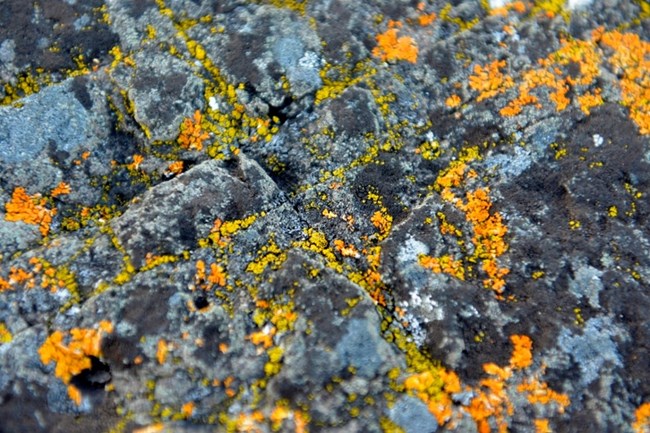
YELIZAVETA RENFRO Space Pioneer“What is that orange on the rocks?” you ask Tom on your first motorboat ride to your cabin. “Lichen,” he tells you, and you realize you’ve never paid heed to lichen before—not really, not in the way it deserves. It’s as though an artist dabbed final touches on the landscape, the perfect accent. And yet it is no afterthought. “Pioneering lichens probably preceded all other life to Isle Royale’s bare, glacier-scoured rocks thousands of years ago,” a sign on the trail informs you. On Dassler beach you begin a lichen study, poring over a miniscule ginger sunburst, noting the astonishing complexity of this algae and fungi union. You once met a poet in Denali who sought poems in whatever would fit in an eight-inch square—a patch of tundra, a wolf print. You could write an entire tome on a solitary square inch. One evening, in town, you spot a book on lichens through the window of the closed visitor center. You come back for it later, and you learn that Elegant Sunburst Lichen, Xanthoria elegans, was sent to space to test its ability to survive an interplanetary journey. After 14.6 days, it returned unscathed, fully able to photosynthesize. 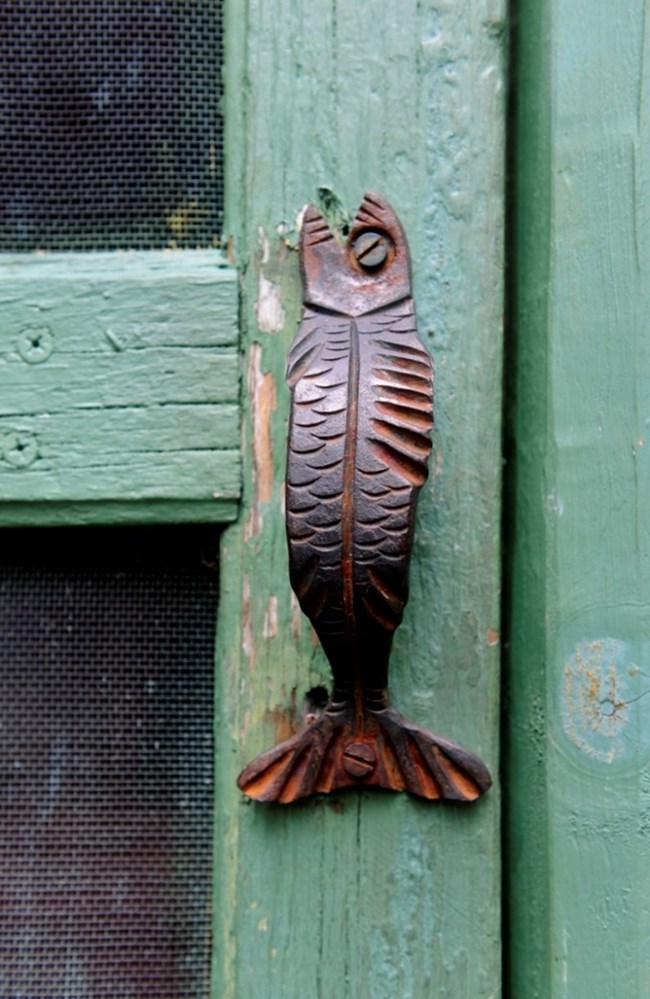
YELIZAVETA RENFRO Ambitions, AspirationsAt first you wonder—how will you fill your days? What will you do? But then, rather than suppressing the stimuli of your surroundings—the modus operandi of your non-island life—you burgeon with just being here. The island engorges you. You spend an hour drawing the screen door, its fish-shaped iron handle. There is just this place, this moment, just the sound of waves. This is how animals live, in a constant now. “I think I could turn and live with animals,” Walt Whitman whispers in your head, “they are so placid and self-contain’d.” The ceaseless pricking anxieties of non-island life transform into mild ambitions, aspirations, smooth as sea-worn stones. Draw wood lilies. Play Scrabble. Skip a rock more than three skips. Find northern paintbrush. Pay attention to trees. Find out why air currents on Scoville sometimes bring a sudden puff of heat. Float in the canoe on a very still evening and take pictures. Draw a map. Read about loons. Row the laundry to town. Think about wolves. Draw the fireplace. Read poem scraps in mouse-nibbled envelope. The boy has his own ambition, bigger than yours: to see the other end of the island, to circumnavigate it. 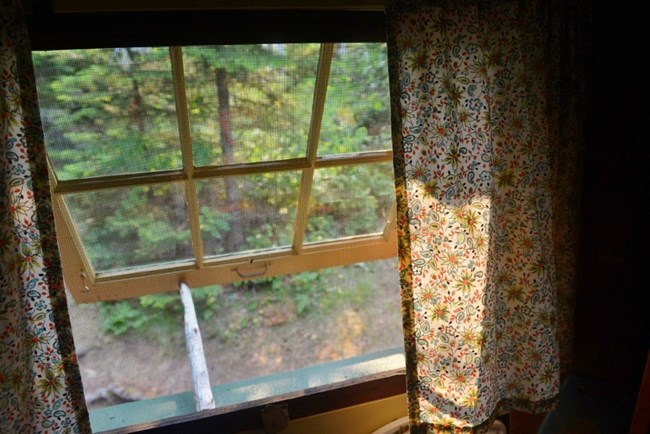
YELIZAVETA RENFRO LavingYou lie on the bench by the open windows in the afternoon, listening to surf churning on rocks, dozing off, doing nothing at all—which is precisely what feels most necessary, urgently so—the sound of the water laving, washing out the old thought patterns, etching new channels. When you close your eyes, you see islands on the horizon, you feel the gentle rocking of a canoe. This is why people have come here for generations. This is why the Dasslers built this cabin and kept returning as long as they could. Anxieties wash out with the surf: schedules, traffic, email, news. Lying here, soaking in sounds, you are doing the work of being yourself, of being present, of observing yourself in this place. It is work your non-island life does not allow. Your boy is reading Treasure Island in the next room. You think of your husband and other child, who are at home, still living their non-island lives, and you wish they were here. You will write them a postcard, but for now, you watch the curtains swell with breeze, listen to the ceaseless laving of the water smoothing the rocks, smoothing your mind. 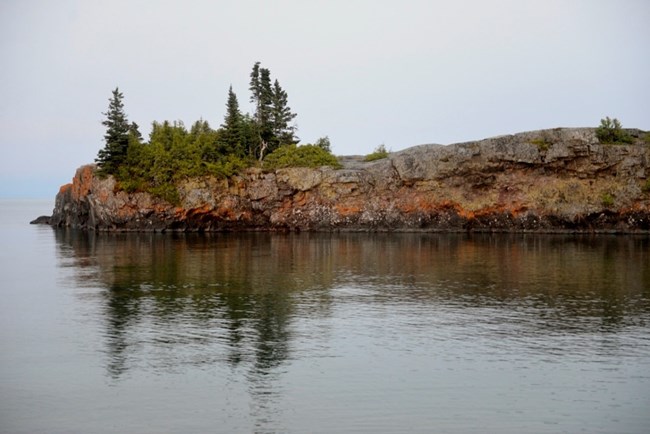
YELIZAVETA RENFRO Scoville Point, NightThe Junior Ranger booklet instructs the boy to spend ten minutes outside in the dark, but a week in, he still hasn’t managed. At the apex of summer, twilight lingers past bedtime. One night, going to the outhouse, you’re so startled by stars you change course, stumbling out onto the craggy rocks. You sit under the hush of a jeweled sky and form a new ambition: to bring the boy here, to gaze at the fiercely burning stars, to think of the dark island and all the life that teems here, all the hearts, large and small, slow and fast, adamantly beating out life’s tempo. A line from an essay by Brian Doyle flits through your mind: “Every creature on earth has approximately two billion heartbeats to spend in a lifetime.” Some burn them up in a year, and some ration them over a hundred years. You think about the hearts that are winking out tonight all over the island in ceaseless waves of death and the ones flashing on for the first time, and you see those hearts in your mind like fireflies, like stars. The heart in your own chest pulses like a star. 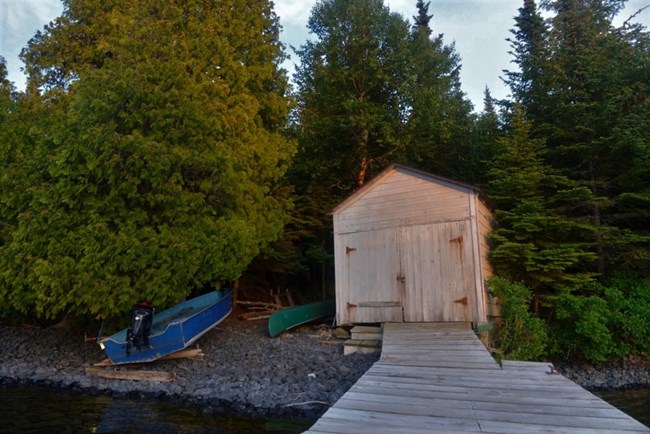
YELIZAVEDA RENFRO Alces alcesYou encounter your first island moose on the 4th of July, when you and the boy are down on your dock, drawing in your notebooks, watching the light fade over Tobin Harbor. You are about to head back when you hear a thrashing, a pummeling and tearing of foliage, directly behind the boathouse. Then you hear the distinct sound of masticating. You won’t be going anywhere just yet. You draw a new picture of your boathouse, your green canoe tucked in behind, which is really a picture of a moose feeding at dusk, of the unseen. Sometimes the things you cannot see loom larger than the things you can. When the moose moves away, when you hear nothing for five minutes, ten, you finally creep—your boy leading the way—towards your cabin. You are nearly there, rounding the bend in the trail, when you come upon the moose, a female the boy later names Matilda, standing directly in front of your front door. She looks at you, and you look back. You will not be going home just yet. You retreat down to your beach, where you wait in the gloaming. 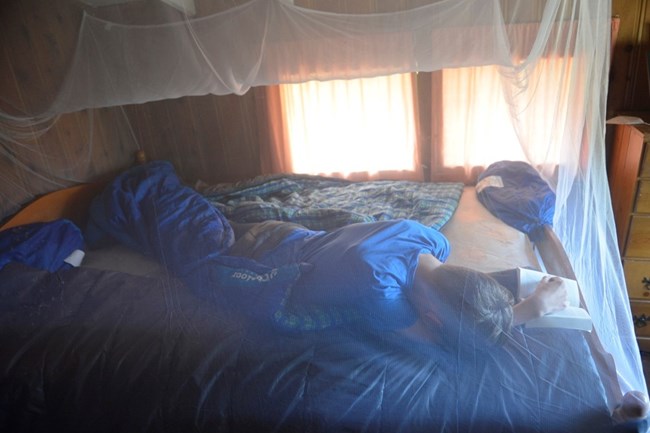
YELIZAVETA RENFRO Battle RoyaleFisherman Pete Edisen was known to say, “There is not a single mosquito on Isle Royale. They’re all married and have lots of children.” You meet these children—all of them. At first, you can’t find fly swatters, so the boy charges around the cabin swinging at mosquitoes with a rolled-up NPS wolf report. One muggy night, the mosquitoes find every miniscule gap in the window screens and stream inside. You don mosquito nets over your heads, burrow into sleeping bags, but the mosquitoes find you, their maniacal whine boring into your ears. The boy keeps strapping on his headlamp, clambering out of his bag, careening around the room armed with the two fly swatters you finally found. He kills a handful, re-mummifies himself, and five minutes later, it all begins again. Finally, in desperation, you paw through the cabin’s nooks and drawers until you find yards of mosquito netting—a godsend at midnight—and then feverishly hang the netting from nails in the ceiling. Finally, ensconced within netting, you throw off the suffocating covers and sleep. Later, Tom tells you that your netting once belonged to his grandmother, who used it to sleep comfortably out on her boat. 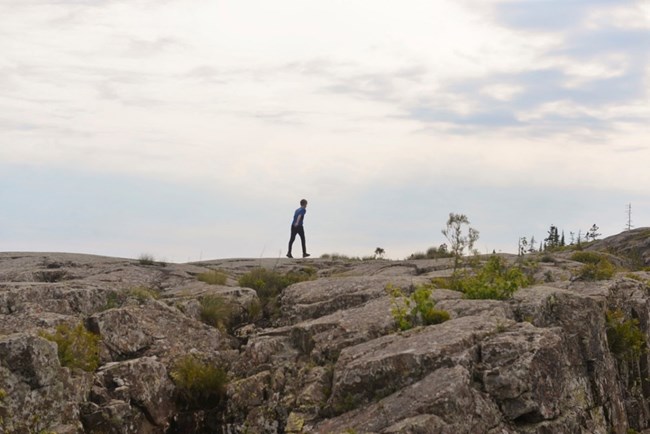
YELIZAVETA RENFRO Plumbarius“I’m going to see Matilda,” the boy says—a euphemism he coined after encountering your moose on the path to the outhouse. Actually, he doesn’t care for the outhouse, and you make regular trips to “town” so he can have his daily appointment with modern plumbing. The boy is a bit of an expert on toilets and sewers. He knows about Roman bathhouses and public toilets, about the history of sanitation, about the reeking streets of medieval and Renaissance London, about close stools and garderobes, about gongfermors and mudlarks, about mussel shells and the necks of dead geese used as toilet paper, about cholera and typhoid and dysentery. He can endure hauling water in buckets from the lake, battling mosquitoes, subsisting on canned soup and stale crackers, roasting under a July sun—but the stench of the fly-filled outhouse causes him consternation. So, you trek to Rock Harbor, day after day, which is not such a bad deal: the Stoll Trail—your commuting route to town—is one of the “100 Best Hikes” in Backpacker: The National Parks Coast to Coast. The boy takes to calling himself the fartist-in-residence—an apt moniker. 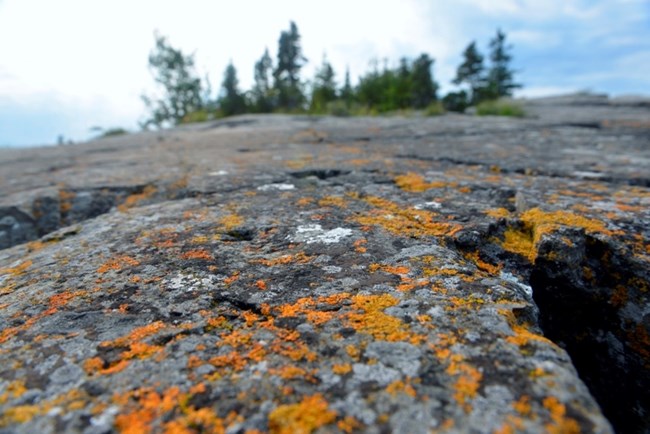
YELIZAVETA RENFRO Just Tilted RocksOne of the signs that you pass daily on the Stoll Trail is titled “Isle Royale: just tilted rocks.” It explains: “All of Isle Royale is a series of ridges and valleys formed by huge tilted layers of rock.” In the cabin, you pore over the work of previous artists-in-residence collected in a book, The Island Within Us. Ladislav Hanka, artist-in-residence in 1992, writes, “For me the dominant feeling of Isle Royale and consequently of the artwork I produced there is of geology stripped bare—life being but the thinnest of membranes stretched precariously taut, clinging to nearly barren rock.” One day, you spy a fallen tree near the trail. It has come untethered from the ground, the tentacled mass of its root ball on display—except rather than being a ball, the roots form a pancake, spreading ten feet or more across but no more than six inches deep. The tree had been growing in just a few inches of soil, clinging tenaciously to rock. You examine the miracle of the root-pancake from every angle, while your boy impatiently urges you on. “Are you done yet?” he wants to know. “But look at this pancake!” you keep exclaiming. 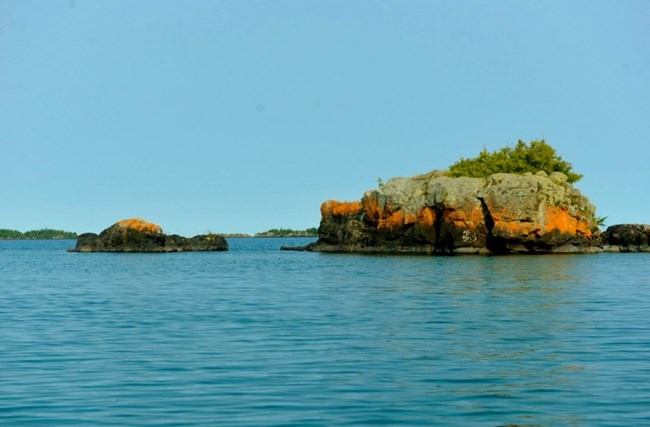
YELIZAVETA RENFRO Island PaletteYou have a new craving for all things orange; you study them, draw them, drink them in. You covet not just the lichen, but also the wood lily, the honey-drenched sliver of a moon tinted orange by smoke from distant fires. You wear down your yellowed orange colored pencil again and again, along with Spanish orange, sunburst yellow, goldenrod, yellow ochre, sand, pale vermilion. You sharpen the oranges, the blues, the grays. Lake Superior eats up peacock blue, jade green, light cerulean blue, cloud blue, except the days it’s brooding. Then the water and the rocks devour so much gray: warm, cool, and French gray, putty beige, ginger root. You study Lake Superior to learn its moods and hues. Sometimes, the water is olive green, sometimes pure white, nearly merging with sky. Sometimes the water transforms from silver to inky to moss to olive to slate to rose to wine in a single day. If you were a painter, you would create a long, narrow canvas to show the stretch of this place, how life unfurls horizontally. You made a mistake when you brought your regular sketchbook with its portrait orientation. The island demands landscape layout, room to unspool. 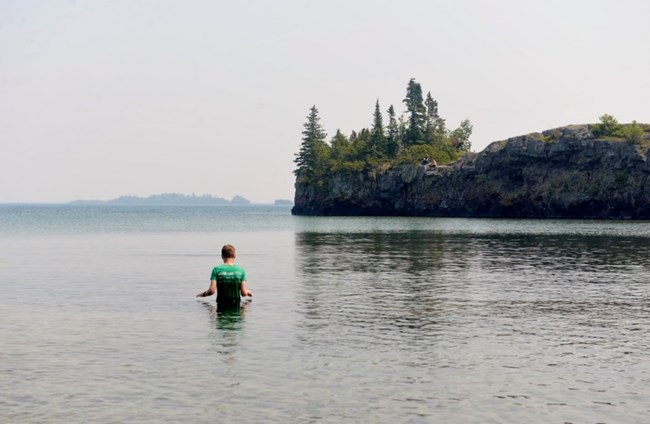
YELIZAVETA RENFRO Scoville Point, NightYour new ambition burns in you: to take the boy out to see stars. But a haze has descended, and night after night, when you drag yourself outside, there are barely any stars, just a few dim pinpricks. Regret swarms you. Why didn’t you take him out the night stars were spilled across the sky? You orchestrate the adventure in your mind: scrambling over rocks, the soothing stroke of waves, the brimming sky. “What do you want most in the world?” you will ask him. What will he say? Is he even glad he came on this trip? Would he prefer to be working on his online coding class in the comfort of central AC, a flush toilet down the hall? Your question is perhaps too big. You would have had no answer at thirteen—not one that meant anything. What do you want most in the world? You turn the question on yourself. To come to more places like this, to have more nights like this, to not squander the heartbeats you have left. As always, you are writing your life before it happens. Later, you’ll be disappointed when it doesn’t follow the script. And even when it does. 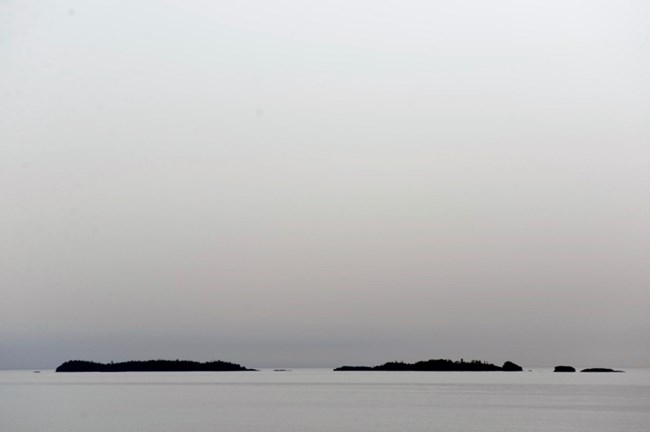
YELIZAVETA RENFRO OutreachYour plan was to offer visitors small pieces of cardstock, pens, colored pencils, and to create postcards with them about their experiences in the park. Ranger Tina taught you this in Denali five years ago, when she led you on a hike, handed you a postcard, and told you to write to yourself. Dear non-island self, you imagined visitors writing. Today I heard the prehistoric rattle of a sandhill crane. Please never forget this. Or, if they preferred, they could write to the park. Dear Isle Royale, you astonish me every day. Thank you for showing me a swimming moose, a sunny ridge thrumming with dragonflies, the warning slap of beaver tail on water. But the ongoing pandemic has shut down public programming. So, you write these postcards to yourself. You think of Barry Lopez’s idea of two landscapes—the one within and the one without—and the ways “the interior landscape responds to the character and subtlety of an exterior landscape.” You pay attention to both, doing what writers-in-residence have done for decades. In 1991, artist-in-residence Keith Taylor wrote about “the extraordinary opportunity of watching myself learn to see a new landscape.” Thirty years later, you continue his work. 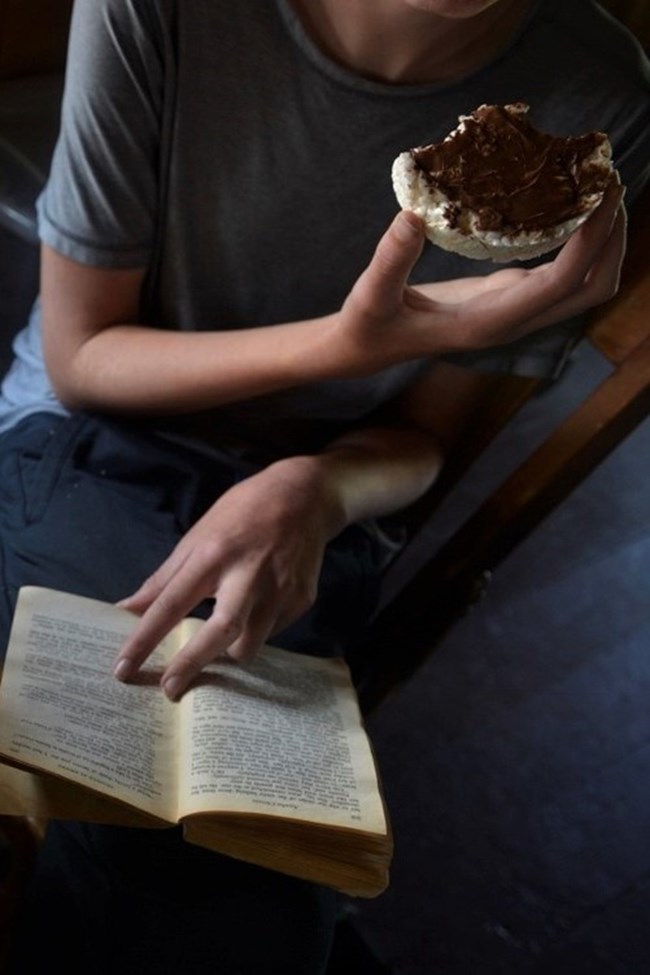
YELIZAVETA RENFRO Dassler LibraryTwo shelves behind the front door hold the cabin’s library: Isle Royale Families Cookbook, The Complete Short Stories of Mark Twain, 1964 Joy of Cooking, 1954 Reader’s Digest condensed books, Call of the Loon by Paul Strong, two Webster’s dictionaries, one with a permanent marker notation across its faded spine declaring “Dictionery,” a 2007 Mini Edition of Alcoholics Anonymous, a library book, Our Kind by Marvin Harris, due at the Two Harbors Public Library on May 24 ’95. The boy devours half a dozen crumbling Agatha Christie Dell 25¢ paperbacks and Isle Royale Shipwrecks by Frederick Stonehouse, which is so well loved its pieces are stored in a Ziploc bag. One afternoon, he yells out the window, “This almanac is so old Russia is called the Union of Soviets!” At night, you take turns reading from Famous Ghost Stories, copyright 1944, making your way through Ambrose Bierce’s “That Damned Thing,” E.F. Benson’s “The Man Who Went Too Far,” Saki’s “The Open Window,” Richard Middleton’s “On the Brighton Road,” Montague Rhodes James’s “The Mezzotint,” and W.F. Harvey’s “August Heat.” The yellowed pages fall out in your hands. The boy carefully tapes the book back together before replacing it on the shelf. 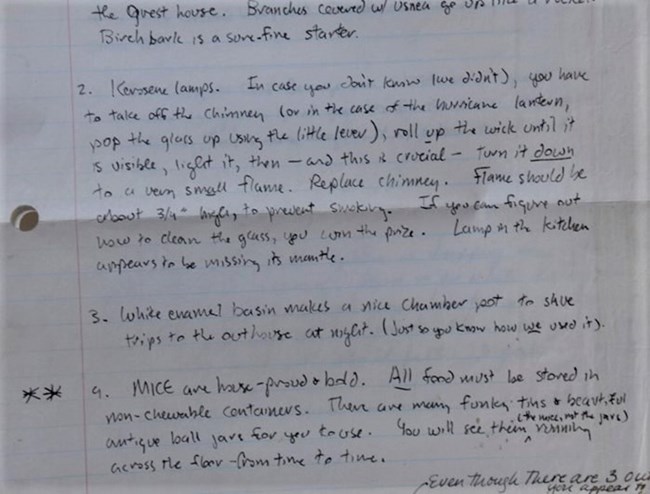
YELIZAVETA RENFRO House-Proud and BoldYour first night, the boy stretches himself out on the bench under the open windows, then suddenly yelps, “There’s a mouse on my sleeping bag!” He moves into the bedroom with you, ceding the bench to the mouse, whom he names Moson. By day six, Moson is having parties in the kitchen every night, gorging on hot chocolate mix and breaching the garbage pail. “We murder tonight,” you say on day nine, holding Tom’s mousetraps. “Getting rid of insects is my department,” the boy says. “Getting rid of mice is yours.” You arm the traps with globs of Nutella and spend a restless night waiting for a snap and squeal, anticipating mouse corpses at dawn. But Moson is cunning: he eats the food without triggering the trap. This happens a second night, a third. The traps become his dinner plates. A past artist-in-residence pens a warning that the resident mice (in 1994) are “house-proud and bold.” Moson comes from a long line of artist-terrorizing mice. By day fifteen, he’s grown so brazen that he just looks at you when you enter the room, ignoring foot-stomping and headlamp beams. The boy performs a veritable stepdance for Moson’s entertainment. 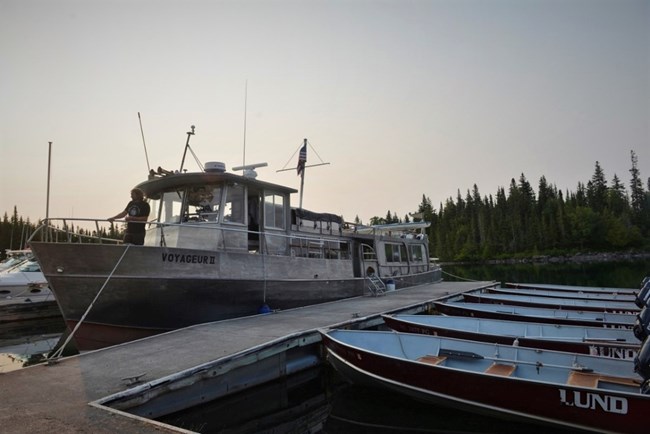
YELIZAVETA RENFRO VoyageursYou hike all the trails near your cabin, to Lookout Louise, Mount Franklin, Lane Cove, Three Mile Campground, Siskowit Mine. You do several fifteen-mile days, venturing farther and farther from home. Still, the boy wants to see more. You book tickets on the Voyageur II to go look at the other end of the island. You borrow a tent from Ranger Katie to camp at Washington Creek. You’re told that most artists-in-residence never go to Windigo; every five years or so one will make the trek. On the boat ride, you take in the island’s span with your eyes. It feels important, to see it from all sides, to take its full measure. “Have you reckon’d the earth much?” Walt Whitman asks. You are reckoning the island, this eye in the wolf’s head that is the world’s largest freshwater lake by surface area. You hike ten miles to see Huginnin Cove and Windigo Mine. The forest is more spacious here, the trees bigger, with less rock laid bare. Your boy declares he likes your end of the island better, but still, this isn’t bad. “Are you looking at lichen again?” he yells, when you fall behind. You’re always falling behind. 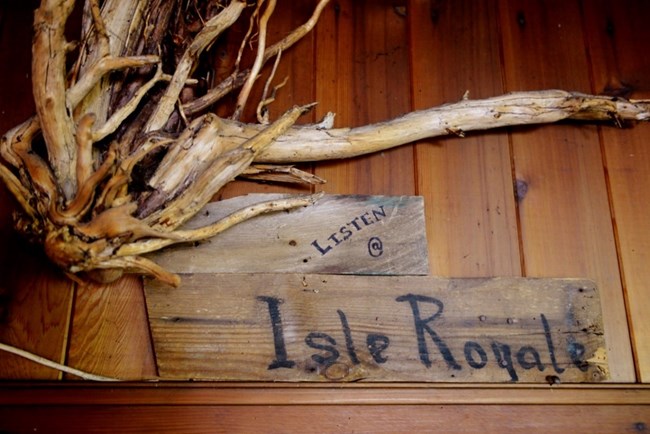
YELIZAVETA RENFRO Island of Gray-Haired WomenHalfway through your stay, some recent dental work comes loose, giving you a gap-toothed grin. You cultivate the wild island look in other ways—for example, in your long, graying pandemic hair. Tom and Kendra tell you a new neighbor, Ellie, is arriving to take up residence in her family cabin a quarter mile from Dassler. She’ll be coming on the Voyageur II with you on your return trip. You spot her on board right away: wild gray hair, weathered face. Her purple socks sticking out of hiking boots match her purple plaid leggings. You watch her face as she takes in the island like a long drink, and you wonder at all the memories packed behind her pale eyes, what it’s like for her to return to this island home. Later, you will meet her sister Sally and go looking for moose together at dusk at Hidden Lake, where you will see your eighth and final moose. Later still, on the morning of your departure, you will watch Ellie, Sally, and Kendra gathered near the Ranger III, talking, and you will be grateful to have known them, to have been part of the island of gray-haired women. 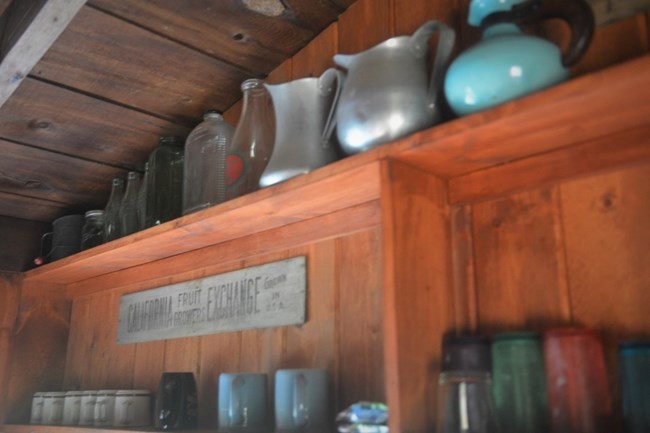
YELIZAVETA RENFRO CulinaryOn a two-burner Coleman camp stove, you heat canned soup, boil water for ramen, cook oatmeal. In the first week you eat up all your fresh fruit. Salami sandwiches or rice cakes with Nutella are lunch. You have no refrigerator and no desire to ferry ice two miles on your back or via canoe, so you keep no perishables. You become engrossed in Isle Royale Families Cookbook, learning how to make Isle Royale divinity, dream bars, Maw Maw’s oatmeal cookies, Clara’s fish cakes, wild rice hot dish, best ever bread, no energy to cook tuna casserole, whitefish livers, fruktsoppa, Swedish pea soup, Mrs. Snell’s fish chowder, boiled dinner, thimbleberry jam, bumbleberry jam, vitamin bread, and Alice Merritt’s butterhorn rolls. On the inside cover, you find a handwritten note: “To purchase a copy of this book contact Ellie Connolly,” with a mailing address. When you see Ellie in town, you ask her, “Are you the Ellie of the cookbook?” She is, of course. The Connollys contributed fifteen recipes. One of your favorites was submitted by the Johnsons, “Recipe for a Wonderful Day,” which includes ingredients like the milk of human kindness, the spice of life, and a dash of dry humor. 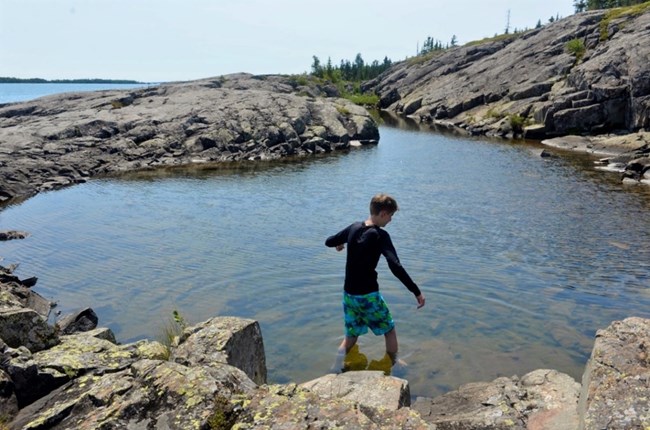
YELIZAVETA RENFRO Swimming on the Moon“Are you on Central Time or Eastern?” Ellie asks you as you make plans to swim. Though she’s your nearest neighbor, the one you share an outhouse and dock with, she inhabits a different time zone. Your time is your boat’s time—if you hailed from Michigan, you’re on Eastern time, but if you set out from Minnesota, you’re on Central time. You meet outside your cabin at 3 p.m.—or 2 p.m., for Ellie—and you set out to the swimming hole where Ellie bathed as a girl. On the way, she shows you where the Dasslers, who knew her grandfather back in Kansas, first camped on the island. Then you come to a brimming basin in the rocks, the size of a shallow swimming pool. Ellie and the boy enter the water and declare it much warmer than Lake Superior. Ellie tells you her teenage grandson will be coming later in the summer—his first time to the island—and she’ll bring him here. “When I was little, I always imagined we were swimming on the moon, in a crater,” Ellie says, indicating the scarred landscape. “Only there are no harebells on the moon.” 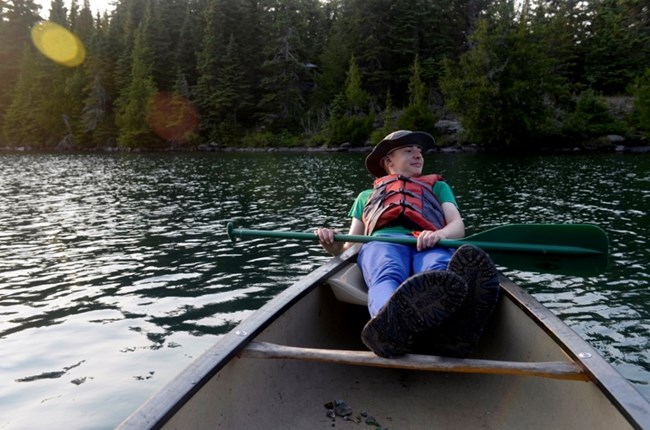
YELIZAVETA RENFRO Canoe FloatThe canoe float is a genre of adventure the boy doesn’t understand. What is the point of aimlessly floating in a canoe? He wants a destination, so you invent goals: row to Smith Island, land on the small spit of land on the west side. Pretend you are explorers, the first ones to ever set foot here. Try to penetrate the vegetation. Discover the island is full of bees. Hunker down on the tiny beach, look for beautiful rocks and sea glass. Get back in the canoe, circumnavigate Smith. Gaze up at your beloved bench on Dassler Point, the place you’ve spent so many hours with your notebook. Paddle up Tobin Harbor, get a closer look at the pieces of the collapsed fish house that have been lovingly laid out on the shore awaiting possible reconstruction. Float slowly back to your dock, pushed by a gentle breeze, resisting the urge to paddle. Floating is the point of a canoe float, you have to tell your impatient boy. When you get back to the cabin, place your gorgeous piece of sea glass from Smith Island on the mantle with the others collected there over the years. 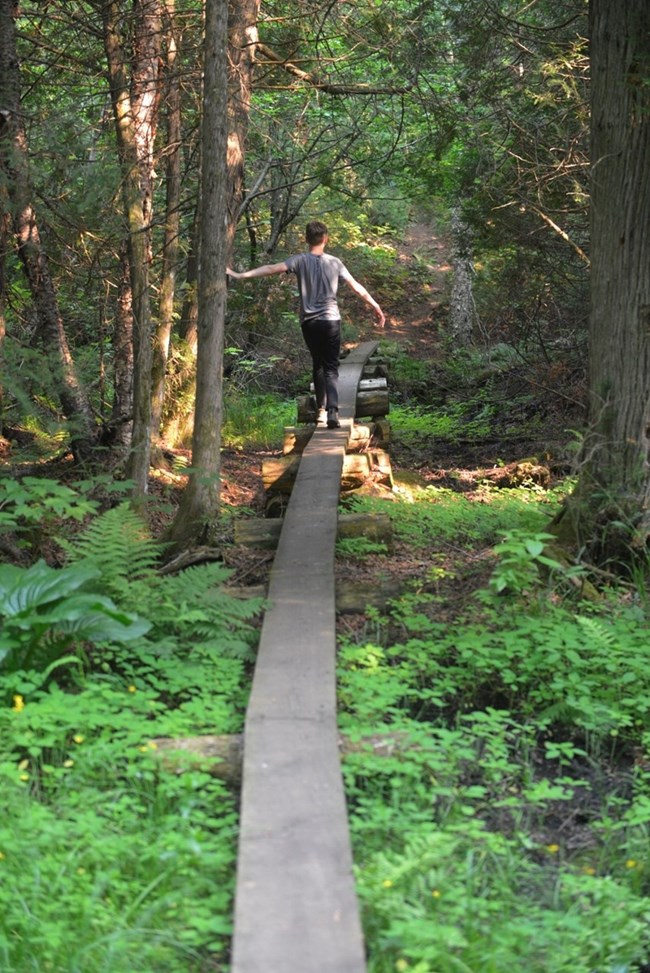
YELIZAVETA RENFRO Questions While HikingAre beavers brilliant? How many days are in six months? Are there more cups in the world than people? Why do flowers waste so much energy making large, colorful petals? Is there a liquid less viscous than water? Would it make enormous splashes if you threw rocks into it? Could you float in it? If flotsam floats and jetsam washes up, what do you call something that sinks to the bottom? What if you had a superpower that made time slow down just for you but everything would continue at a normal pace for everyone else, so it would appear to outside observers that you were moving at incredible speed? But what if the superpower made you age more quickly? Would it be worth it? What do wolves think about? What do their mental maps look like? Do they know the contour of every ridge, every shoreline? Do animals know where they are? Do they look out across the water and imagine a life somewhere else? Do they think of other places? What does it mean to know where you are? What do you want most in the world? 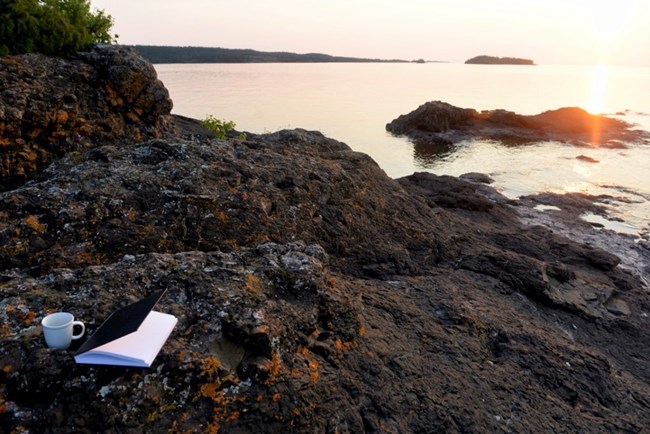
YELIZAVETA RENFRO Dassler Beach, SunriseOn day fifteen, you take your coffee and notebook to the lichen-rimed rocks to watch the sunrise. As light begins to blush the horizon, the hard-etched, backlit islands look like the jagged maws of dark caves, places that suck in light. Three mergansers float nearby on the water. A boat motors past far, far out and disappears. Then a crack of molten light opens right beside one of the islands, metamorphosing to a bar to an inverted mushroom to a sofa to a molten pool to a deflated ball to an egg to finally, a round disk, rising not from the horizon slit but from a morass of distorting haze. These miraculous transformations take eight minutes, and then the sun is properly in the sky, a ball behind scrim of smoke. A couple of hikers straggle out to Scoville Point, perhaps trying to catch the sunrise, but they’ve just missed it. It’s all yours. The hikers leave, and it is just you on the beach, with the feeling that you should have witnessed every sunrise, that you have squandered your time. Your three mergansers fly away—the day is started, and they have business elsewhere. 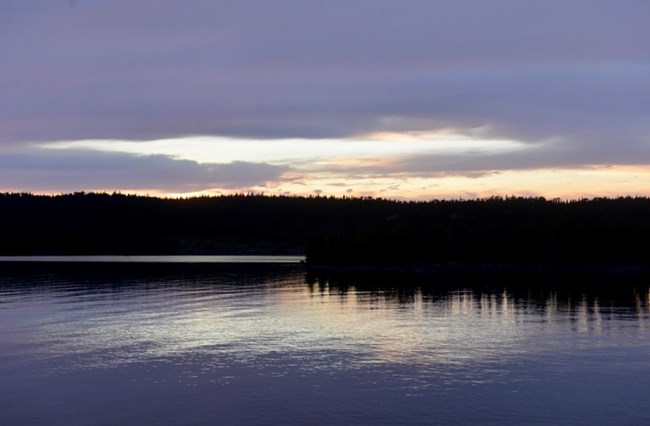
YELIZAVETA RENFRO Scoville Point, NightThe sky finally clears, and you take the boy out on the rocks, and the stars burn fiercely, but none of the rest of it happens according to script. The boy is so tired he can hardly keep his eyes open. He answers your questions with grunts, finally says, “I’m tired,” so you go back. But you did it, right? You saw the messiness of the Milky Way, like the effusive paint spatters left behind from a majestic masterpiece you cannot see, your senses able to apprehend only what’s left on the studio floor. You recognize only the sloppiness of creation: spattered stars, tilted rocks, riots of vegetation. You think: what you wanted can’t be manufactured, planned. This is why the term “making memories” makes you cringe—as though meaning can be orchestrated. You don’t know this yet, but the next evening, you and the boy will glide in your canoe on water still and clear as a windowpane and hear loons speak their antediluvian language, and the moment will unexpectedly arrest you: the loons blazing as brightly as stars on the water. And this will be so much more than the exhausted scrabble over rocks in the night. 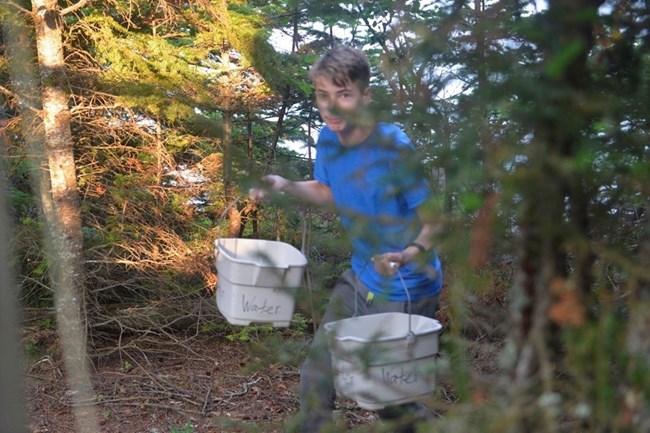
YELIZAVETA RENFRO SimplicityA nibbled, yellowing envelope, stored inside a Ziploc bag, contains “beginnings of poems” that artist-in-residence Gary Lawless left in June of 1997, along with other scraps, written in many hands, from a community poem activity organized in August 2001. Gray-green lichen has created a ghost tree. The cry of the loons echoes my sadness. One contains a single word: Simplicity. Yes, simplicity is apt: you have been simply eating, sleeping, reading, hiking, canoeing, looking at the sky, sweeping the floor, washing the dishes, carrying buckets of water. Your inert black brick of a phone has slipped to the bottom of your backpack. You’ve had no email, texts, social media, or news for seventeen days. You have no idea what’s happening in the world—except for the fires in Canada that have smoked over your sky, except what your senses have told you. What do you want most in the world? You write your question on a scrap, add it to the envelope. Aboard the Ranger III on the ride back to Houghton, as passengers abandon puzzles and games to stare at their phones in silence, you write in your notebook: I cannot believe I have to go back. 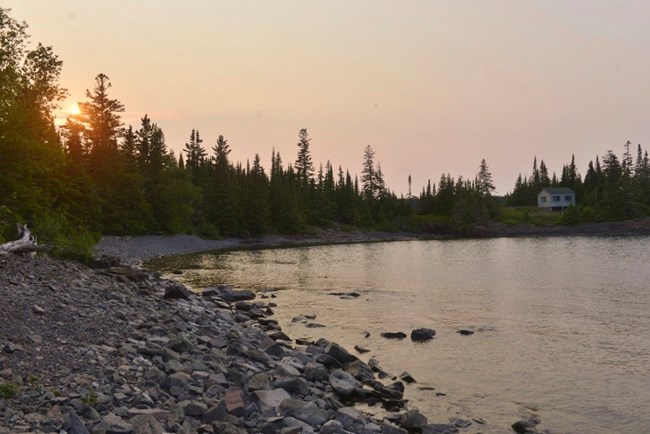
YELIZAVETA RENFRO Final Trek to Town“What do you want most in the world?” 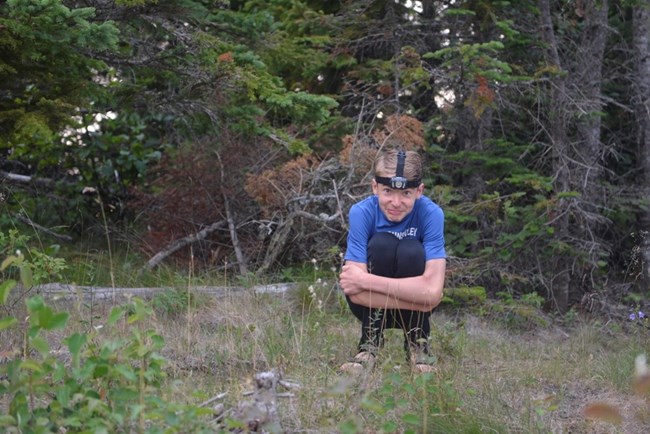
YELIZAVETA RENFRO The Boy Writes BackThe boy will now make a few corrections. To begin with, the Gales’ outhouse was a surprise not only because of its odorlessness and lack of bugs, but also because of its cheery paint job and the fact that it had two seats, presumably to allow you to use it with friends. This reminded me distinctly of a Roman bathhouse, in which people would sit on long benches of latrines, talking and socializing. Secondly, the artist suspiciously omits the fact that the boy won five out of six Scrabble matches (earning a staggering 132 points for the word JOYOUSLY), and only lost one because it was approximately two hundred degrees, and the boy’s brain was melting. Thirdly, the artist makes it sound as if the pauses to peer at lichen were minor interruptions in our hikes; however, this is wildly inaccurate. Every hundred feet the artist would stop, squint at some lichen, take off her backpack, take the camera out, painstakingly find the perfect angle, take two photos, put the camera back, and, finally, the artist was ready to proceed. The main factor slowing us down on hikes was the amount of interesting lichen to be found along the way. 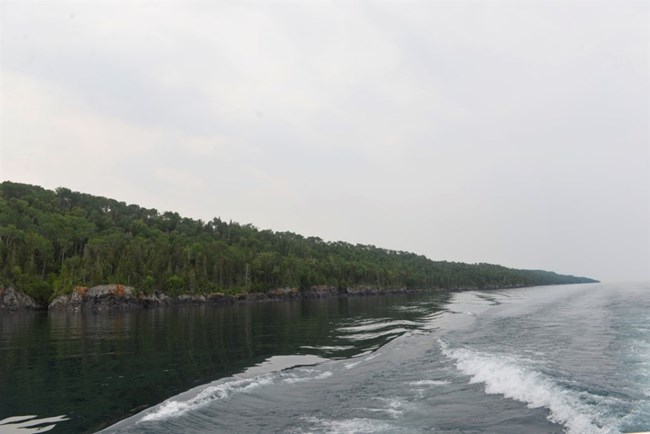
WakeYou arrived a year late—not that it matters in island time, in the grand scheme of things. Or maybe it does. Had it not been for the pandemic, you would have come alone, a year earlier. You wondered: was it right to bring the boy? He was demanding; he wanted to be on the move, doing things. But now, you can’t imagine any of it without him: the daily bathroom commutes, the voyage to Windigo, the fifteen-mile hikes, the canoe floats. The following summer, due to the boy’s insistence, you will be headed back to the island, where you will strap on packs and walk across its spine, reckoning it finally with your stride. Then the boy will accompany you to another residency, at another cabin in the Upper Peninsula. He will read books about wolves. He is set, perhaps, on a life course that you never anticipated. You remember what you overheard the purser say on the Ranger III on your trip back: “There are days when I look out and the water is glass. Not a wave to be seen. Just our wake.” Isle Royale leaves its own wake for all who visit, undulating across the years. |
Last updated: March 20, 2024
